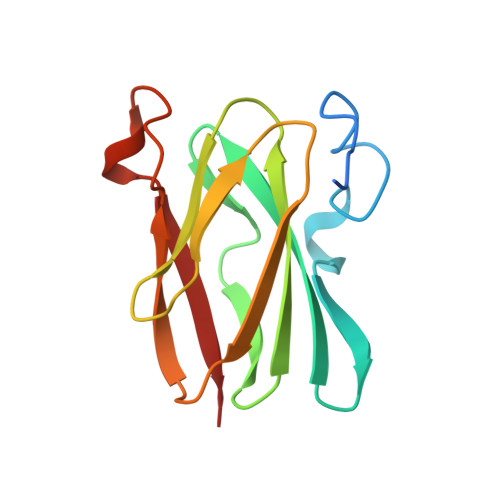Unexpected electron spin density on the axial methionine ligand in CuAsuggests its involvement in electron pathways.
Morgada, M.N., Llases, M.E., Giannini, E., Castro, M.A., Alzari, P.M., Murgida, D.H., Lisa, M.N., Vila, A.J.(2020) Chem Commun (Camb) 56: 1223-1226
- PubMed: 31897463
- DOI: https://doi.org/10.1039/c9cc08883k
- Primary Citation of Related Structures:
6PTT, 6PTY - PubMed Abstract:
The CuA center is a paradigm for the study of long-range biological electron transfer. This metal center is an essential cofactor for terminal oxidases like cytochrome c oxidase, the enzymatic complex responsible for cellular respiration in eukaryotes and in most bacteria. CuA acts as an electron hub by transferring electrons from reduced cytochrome c to the catalytic site of the enzyme where dioxygen reduction takes place. Different electron transfer pathways have been proposed involving a weak axial methionine ligand residue, conserved in all CuA sites. This hypothesis has been challenged by theoretical calculations indicating the lack of electron spin density in this ligand. Here we report an NMR study with selectively labeled methionine in a native CuA. NMR spectroscopy discloses the presence of net electron spin density in the methionine axial ligand in the two alternative ground states of this metal center. Similar spin delocalization observed on two second sphere mutants further supports this evidence. These data provide a novel view of the electronic structure of CuA centers and support previously neglected electron transfer pathways.
Organizational Affiliation:
Instituto de Biología Molecular y Celular de Rosario (IBR, CONICET-UNR), Ocampo y Esmeralda, Rosario 2000, Argentina. vila@ibr-conicet.gov.ar.

















